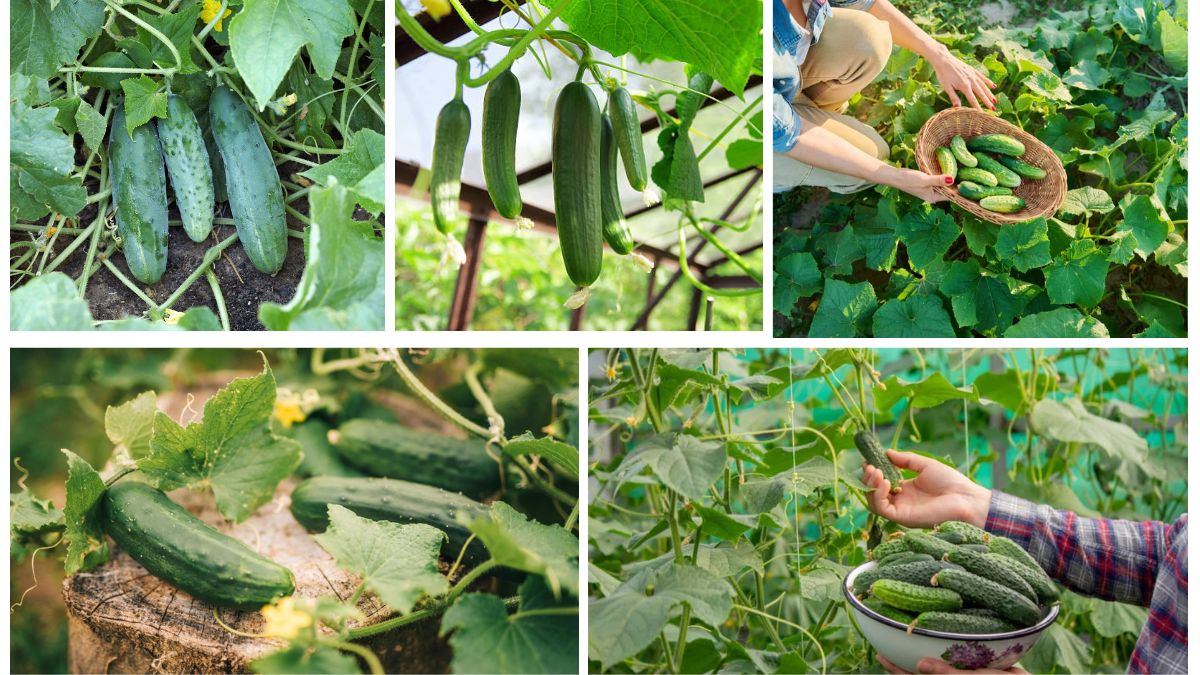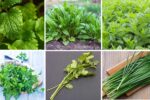Cucumbers are a staple of summer gardens, prized for their crisp texture, refreshing taste, and versatility in salads, pickles, and even infused water. Whether you’re a beginner or an experienced gardener, growing cucumbers can be a rewarding experience when done right. This complete guide will walk you through every step of the process—from choosing the right variety to harvesting the perfect cucumber.
Why Grow Cucumbers?
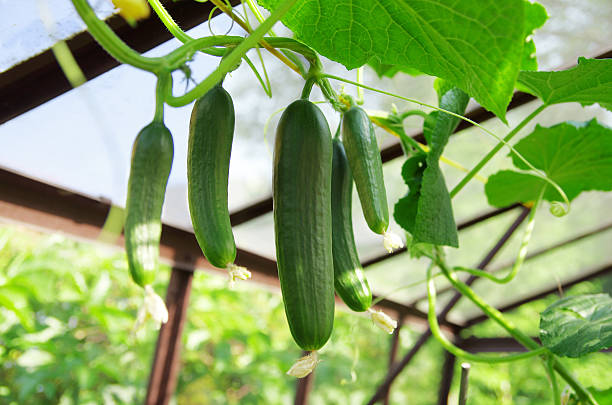
Cucumbers are fast-growing, productive, and easy to cultivate with the right care. They thrive in warm weather, making them ideal for spring and summer planting. Plus, their vining habit means you can grow them in small spaces vertically. With proper support, a few plants can provide an abundant harvest all season long.
Some benefits of growing cucumbers:
- Quick maturity (usually within 50–70 days)
- Great for vertical gardening
- High water content makes them hydrating
- Ideal for both fresh eating and preserving
Step 1: Choosing the Right Cucumber Variety
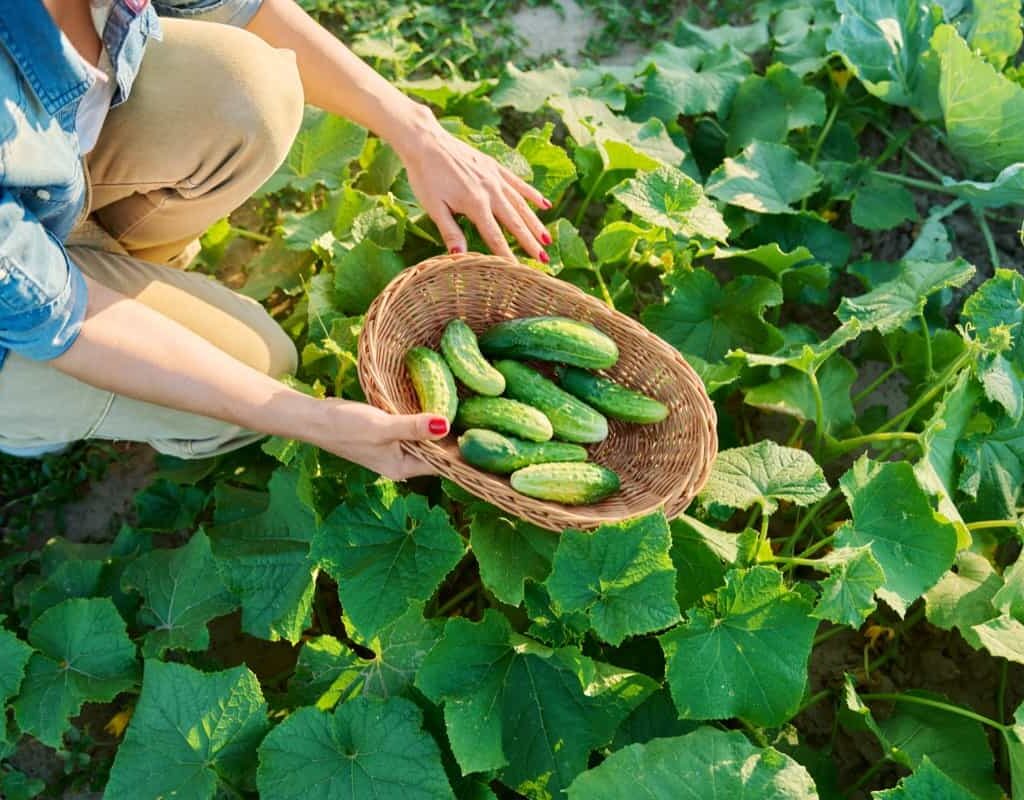
Before planting, it’s important to select a cucumber variety that matches your needs and growing conditions. There are two main types of cucumbers:
1. Slicing Cucumbers
These are longer varieties ideal for fresh consumption. Popular options include:
- Marketmore 76: Disease-resistant and prolific
- Straight Eight: Classic slicing type with smooth skin
2. Pickling Cucumbers
Shorter and crunchier, they are ideal for making pickles:
- Boston Pickling: Heirloom favorite for crunchy pickles
- National Pickling: Known for its rapid growth and flavor
Also, consider bush varieties like Bush Champion for containers or small gardens, and parthenocarpic varieties for greenhouses where pollination is limited.
Step 2: Preparing the Soil
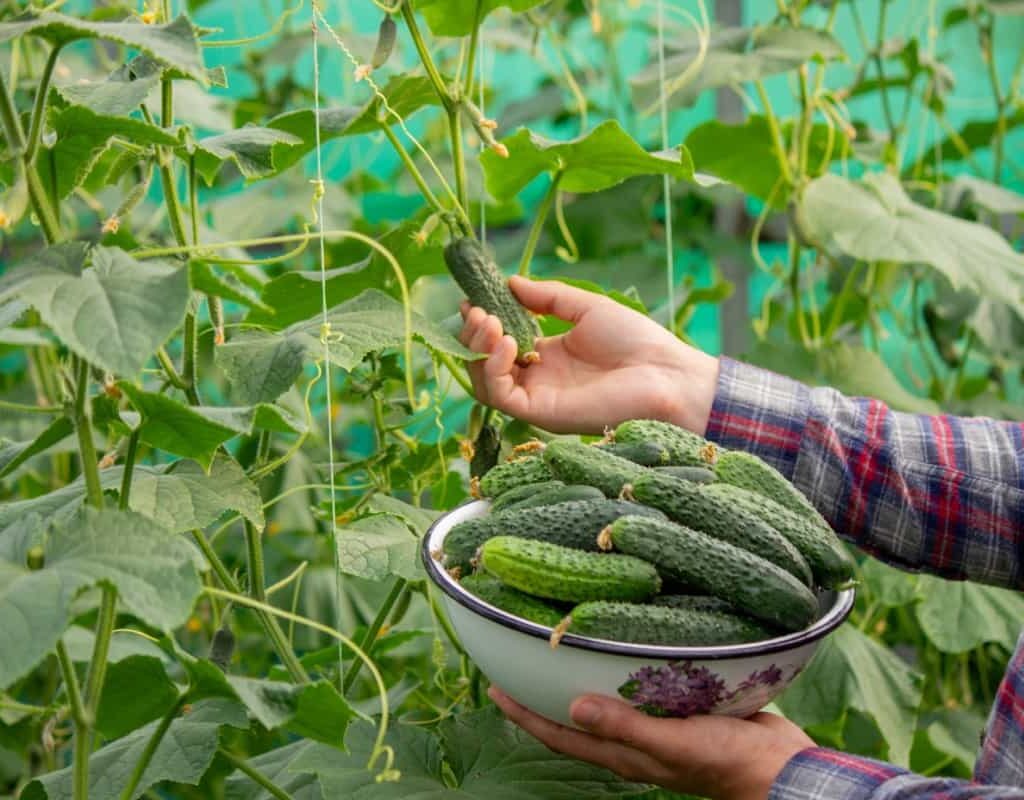
Cucumbers prefer well-drained, fertile soil with a pH of 6.0 to 7.0. Good soil preparation is key to getting a strong start:
- Loosen the soil to a depth of 12–18 inches
- Mix in compost or aged manure to improve fertility and drainage
- Consider raised beds if soil is too clayey or compacted
A handful of balanced fertilizer (such as 10-10-10) before planting can give the plants a helpful boost.
Step 3: When and Where to Plant
Cucumbers love warmth. Wait to plant until:
- Soil temperature is at least 65°F (18°C)
- Night temperatures stay above 55°F (13°C)
You can start seeds indoors 2–4 weeks before the last frost date or direct sow outdoors after frost danger has passed.
Planting Location Tips:
- Full sun (at least 6–8 hours daily)
- Wind protection to help vines grow strong
- If growing vertically, choose a spot where you can install a trellis or support
Step 4: Planting the Seeds or Seedlings
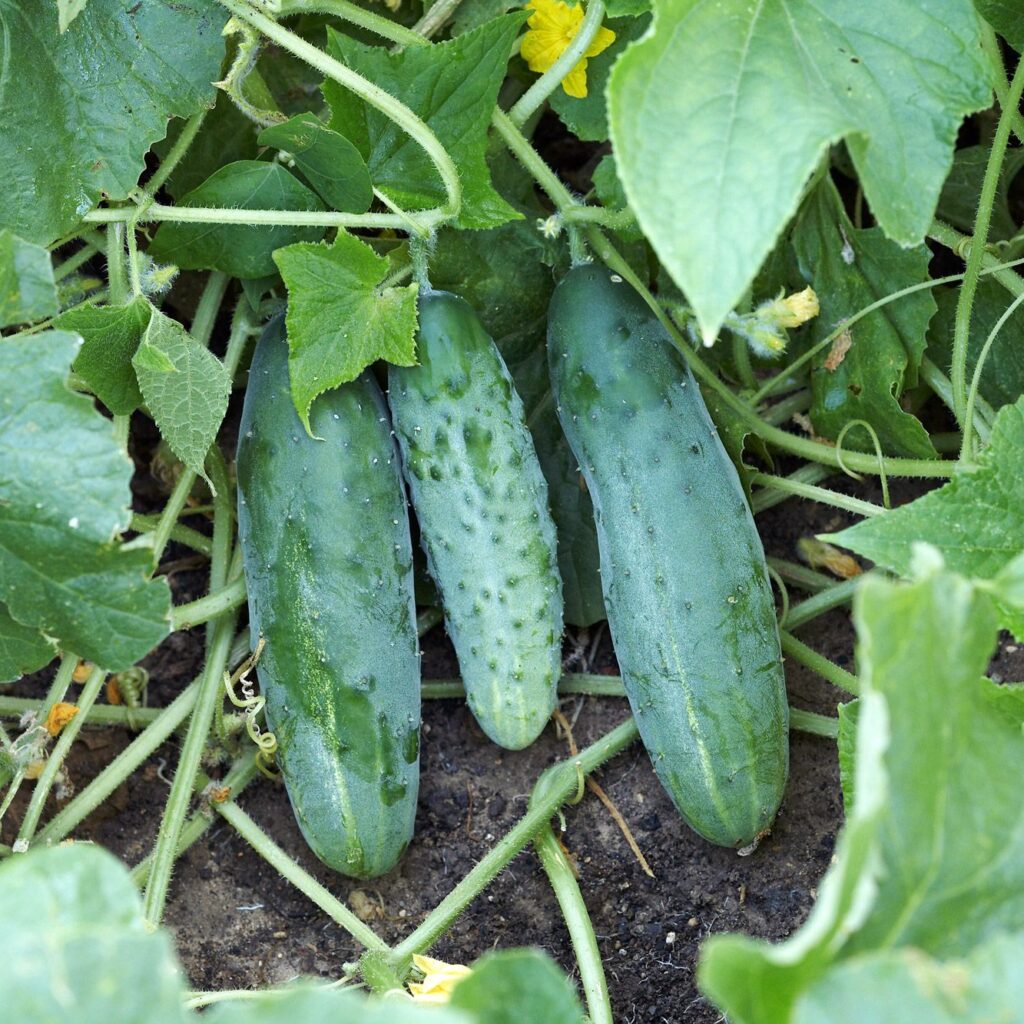
Direct Sowing:
- Sow seeds 1 inch deep and 12 inches apart in rows or mounds
- Thin to one plant every 12–18 inches once they sprout
Transplanting:
- Harden off seedlings before planting outdoors
- Space them similarly to direct-sown plants
- Water well after planting
Use black plastic mulch or straw around plants to retain moisture and suppress weeds.
Step 5: Providing Support with Trellising
Trellising cucumbers not only saves space but also improves air circulation, reduces disease risk, and makes harvesting easier.
Common trellis types:
- A-frame wooden trellises
- Wire mesh fences
- Teepees made from bamboo stakes
Train the vines by gently tying them as they grow using garden twine or soft ties.
Step 6: Watering and Fertilizing
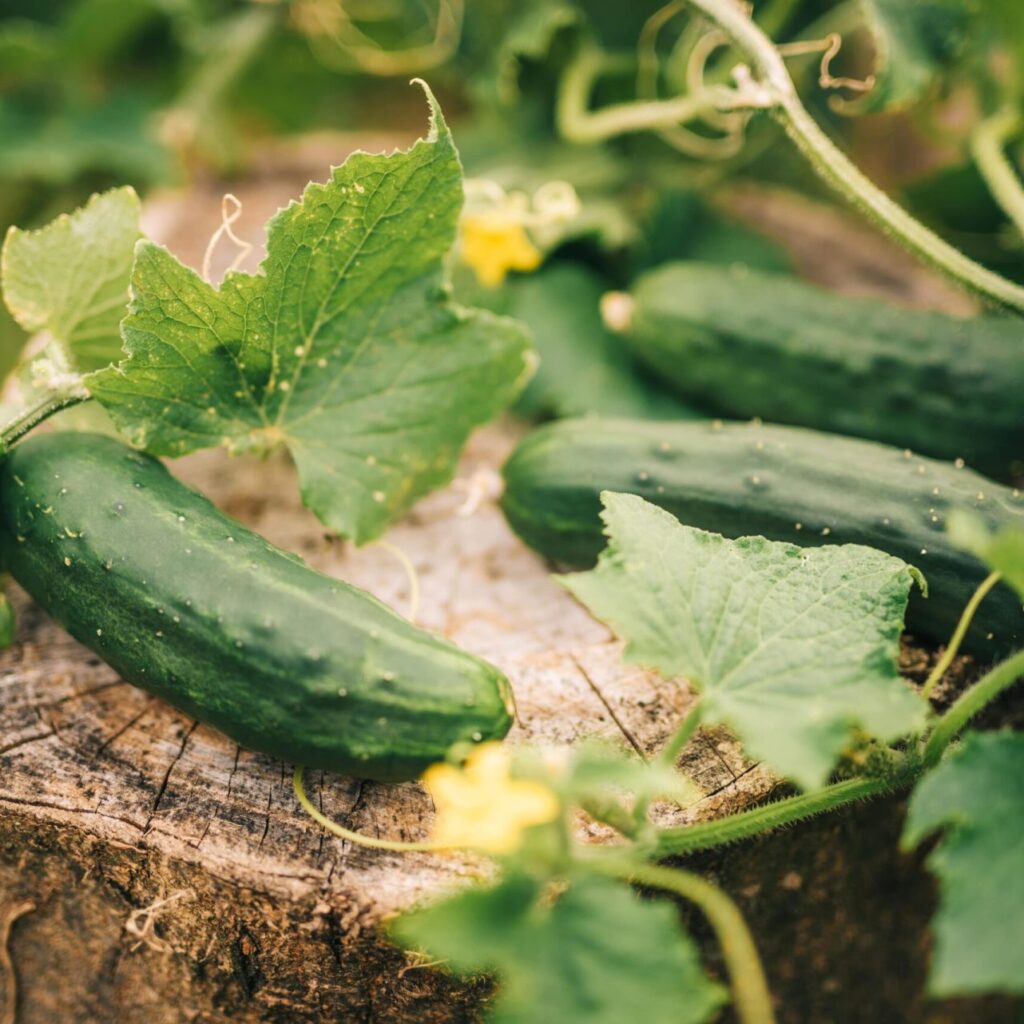
Cucumbers have high water content, so consistent watering is essential for crisp, juicy fruits.
Watering Tips:
- Water deeply 1–2 times a week
- Avoid overhead watering to prevent mildew
- Mulch to reduce evaporation
Fertilizing Tips:
- Use a balanced fertilizer every 3–4 weeks during the growing season
- Too much nitrogen can lead to more leaves and fewer fruits—watch for imbalances
Step 7: Pest and Disease Management
Cucumbers are relatively easy to grow, but they can be affected by some common pests and diseases.
Common Pests:
- Cucumber Beetles: Yellow beetles with black spots or stripes. Use floating row covers early on.
- Aphids: Small green insects that can be hosed off or controlled with neem oil.
- Spider Mites: Tiny pests that thrive in hot, dry conditions—mitigate with regular misting.
Common Diseases:
- Powdery Mildew: White powdery spots on leaves. Use sulfur sprays or resistant varieties.
- Downy Mildew: Yellow spots on leaves, often in humid conditions.
- Bacterial Wilt: Spread by cucumber beetles, it causes wilting. Remove infected plants promptly.
Tip: Practice crop rotation and space plants properly to reduce disease risks.
Step 8: Pollination and Fruit Production
Most cucumber varieties rely on pollinators like bees to set fruit. If your plants are flowering but not producing cucumbers, poor pollination may be the reason.
Encourage pollination by:
- Planting flowers nearby to attract bees
- Gently shaking plants or using a small brush to transfer pollen between flowers
Parthenocarpic varieties don’t need pollination and are great for greenhouses or indoor containers.
Step 9: Harvesting for Peak Freshness
Cucumbers grow quickly, so monitor them daily once they begin to produce. Pick them regularly to encourage continued fruiting.
Harvest Guidelines:
- Slicing cucumbers: Harvest at 6–8 inches long
- Pickling cucumbers: Pick at 2–4 inches for best texture
- Use a sharp knife or scissors to cut the stem above the fruit
- Avoid letting cucumbers turn yellow or overgrow, as this can signal the plant to slow production
Step 10: Storing and Using Your Cucumbers
Freshly picked cucumbers are best enjoyed within a few days.
Storage Tips:
- Store in the crisper drawer at 50–55°F (10–13°C)
- Don’t wash until ready to use to prevent spoilage
Ways to Use Cucumbers:
- Sliced in salads or sandwiches
- Blended into cold soups like gazpacho
- Infused in water with mint and lemon
- Pickled with vinegar and spices for a tangy treat
Final Thoughts
Starting your cucumber garden is easier than you might think, and the reward of crisp, refreshing cucumbers from your backyard is worth the effort. With the right variety, proper soil preparation, consistent watering, and attention to pests, you’ll enjoy a bountiful harvest throughout the warm season. Whether you prefer them fresh or pickled, cucumbers are a must-grow for every home gardener.
Ready to plant? Your perfect cucumbers are just a season away!
